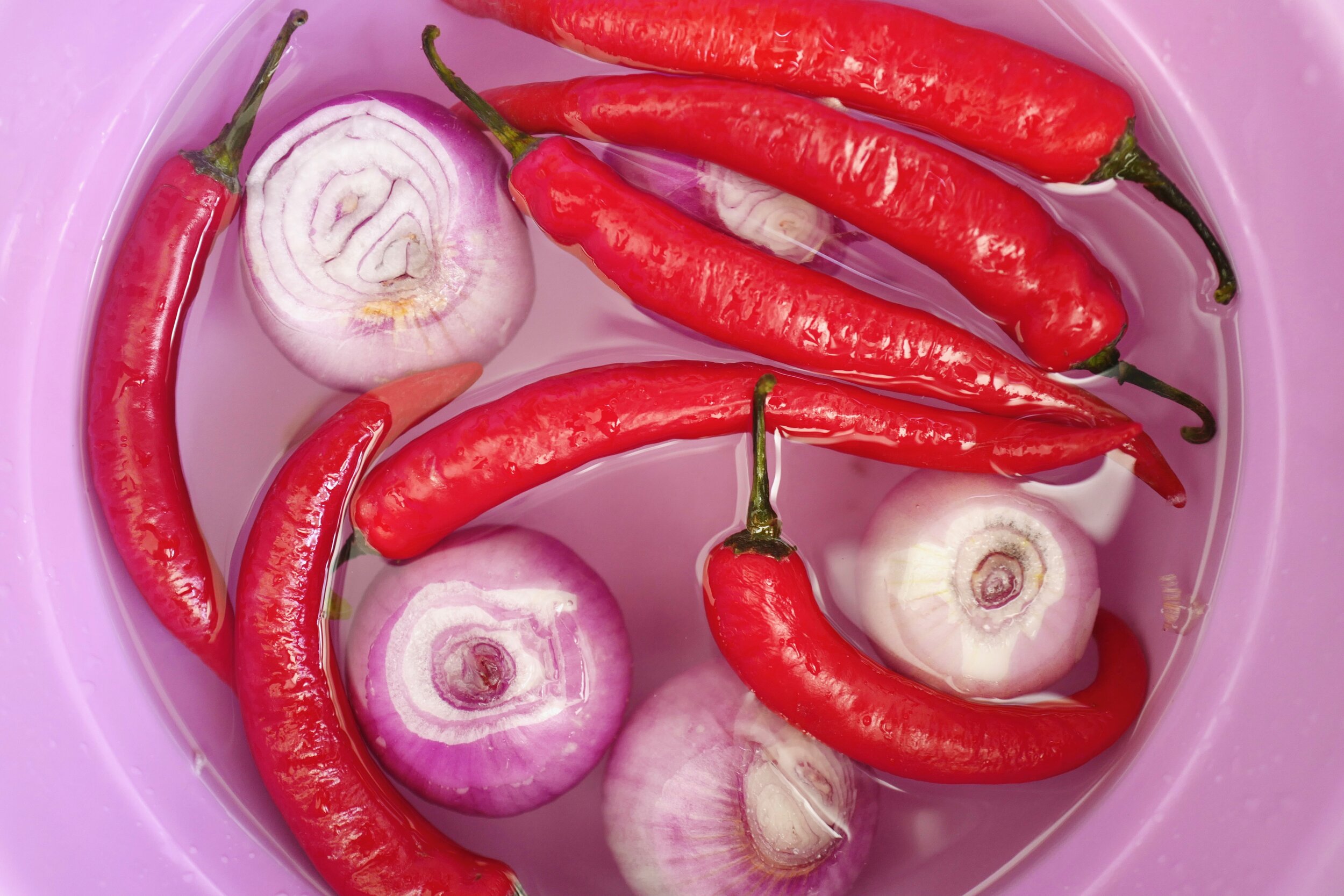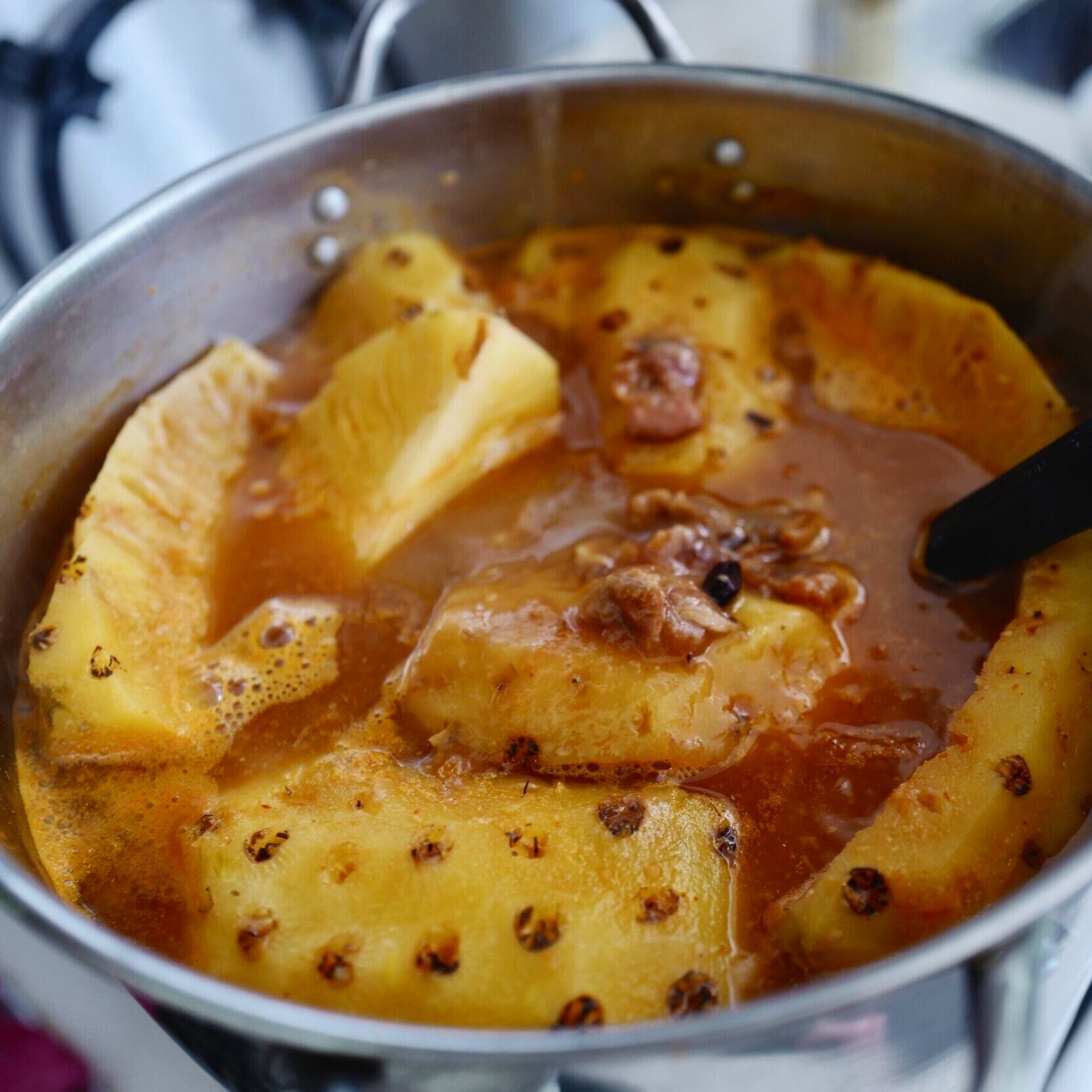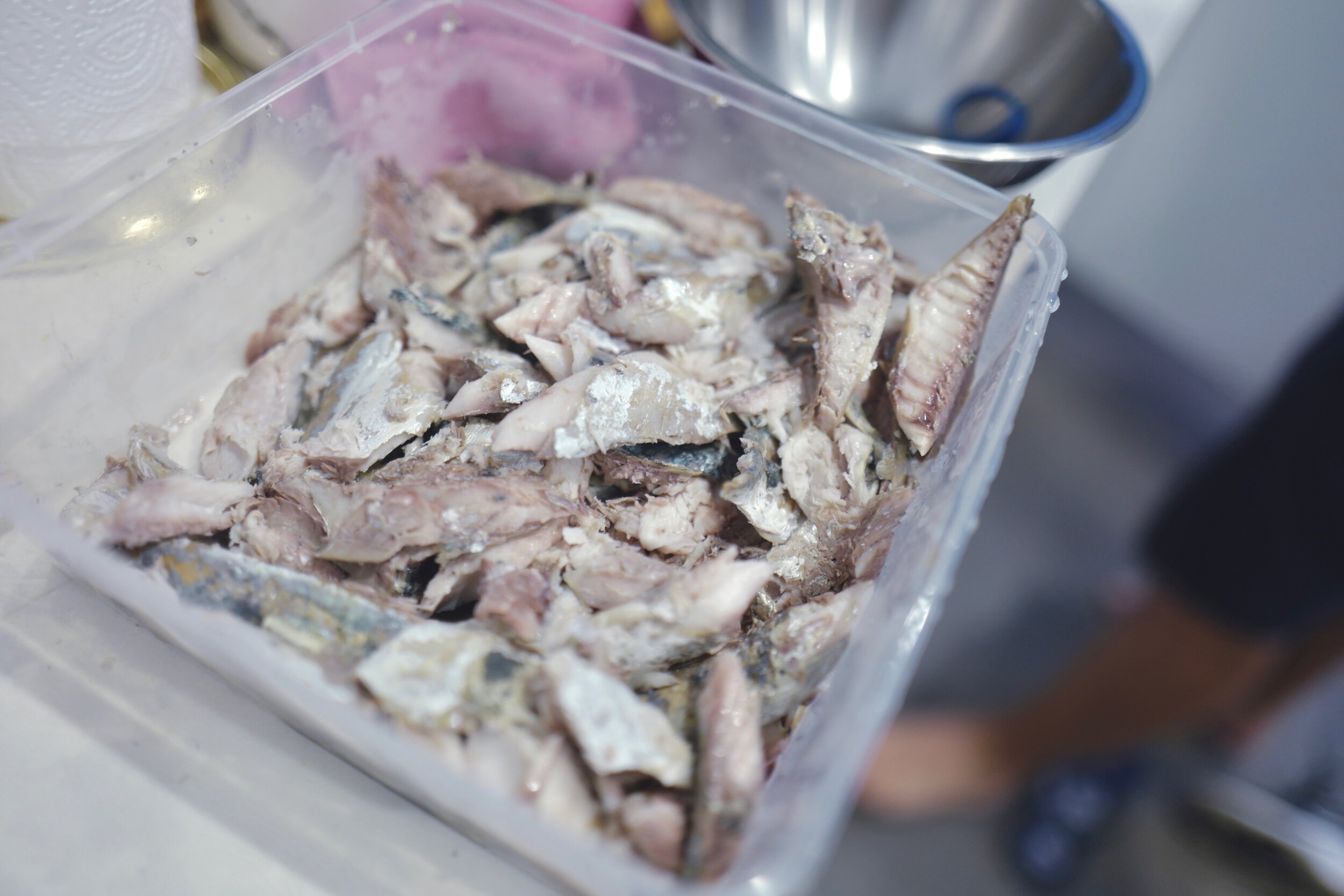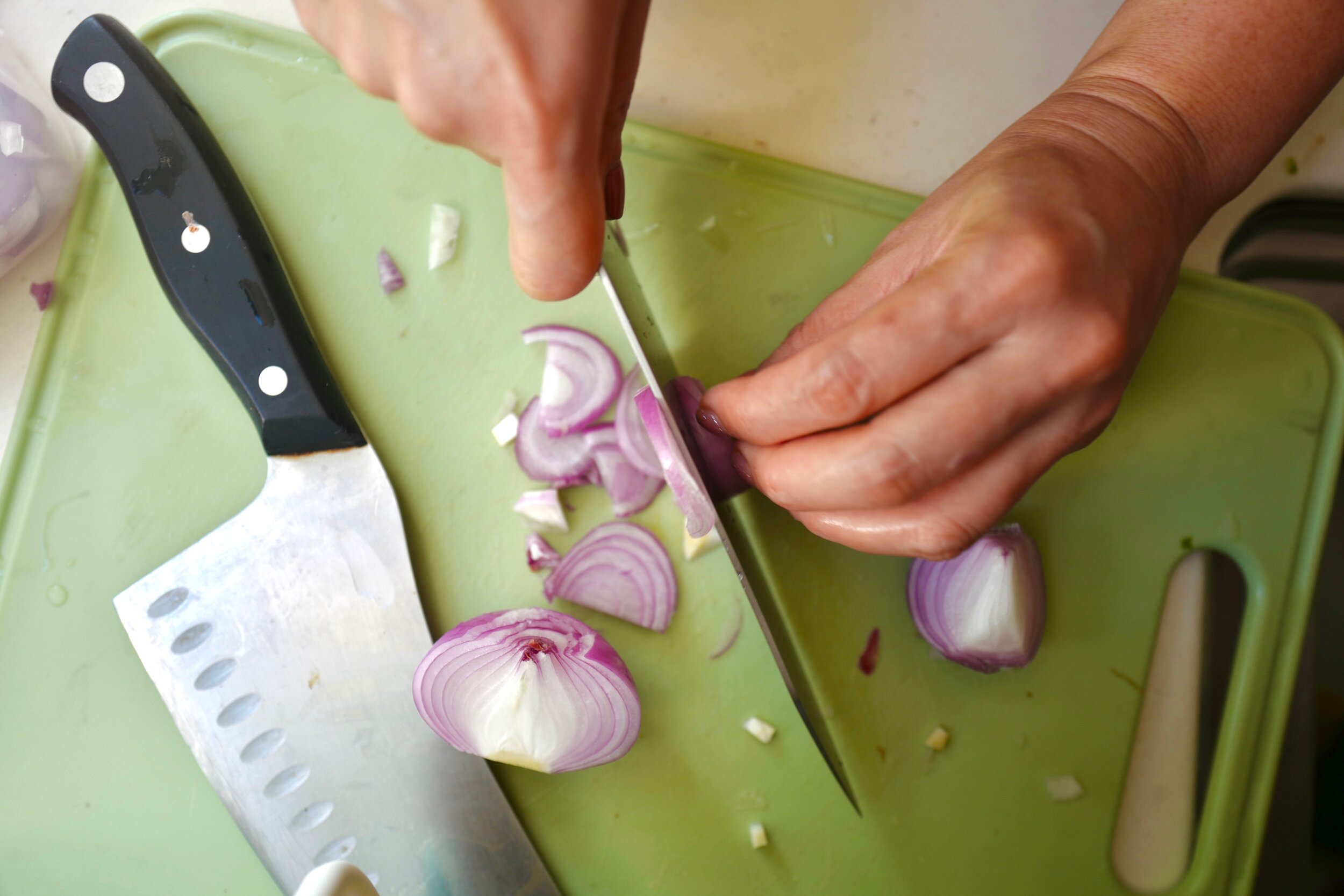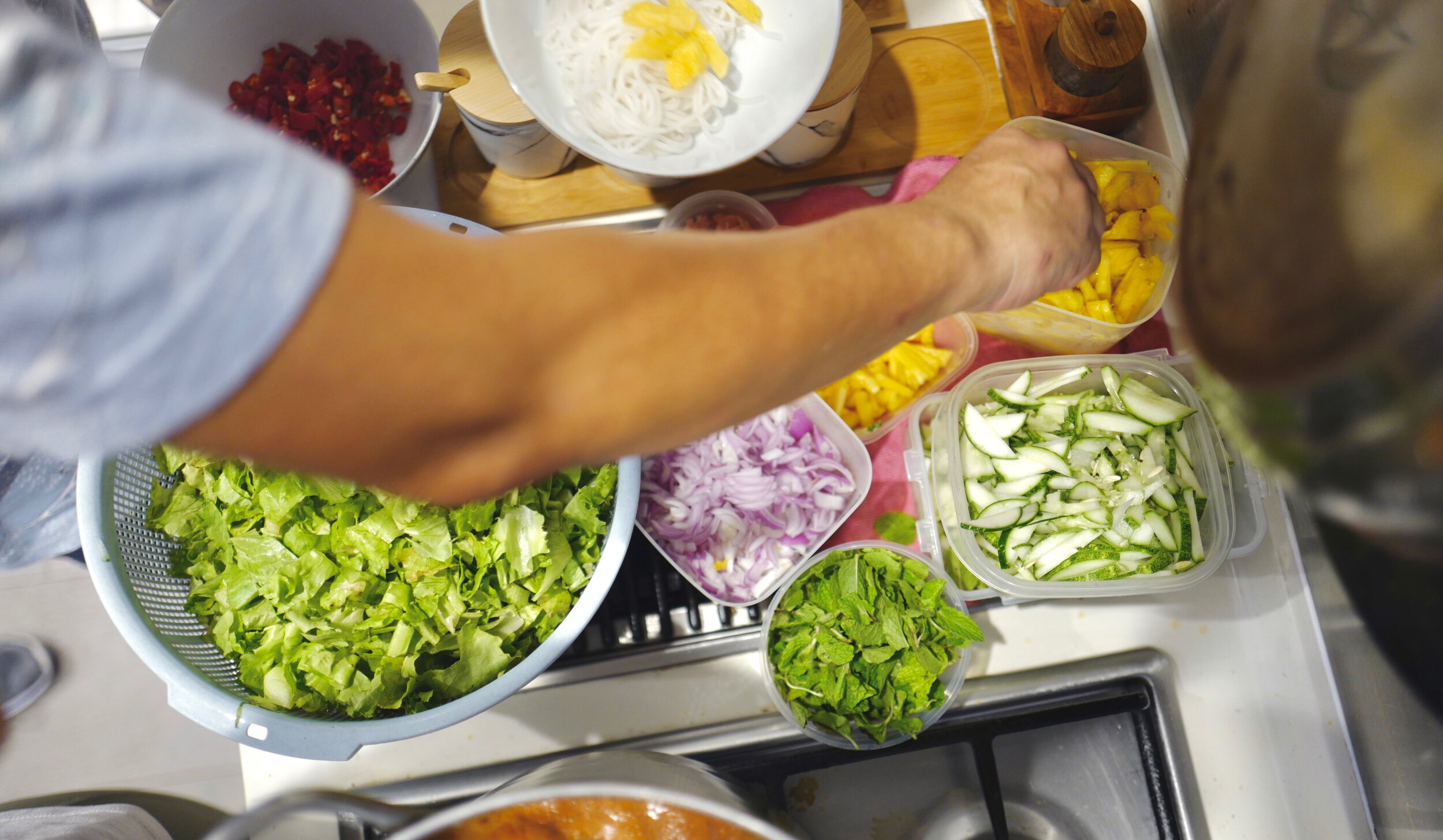Uncle’s Assam Laksa
Author & Photographer: Hsin Min Zee
All is still this sleepy Sunday afternoon. Gu Jiong’s* living room is empty and quiet. The kids are holed up in their rooms getting ready for the school week, so the cats are the first signs of life I encounter as I walk towards the dining room. Meelo, one of the many rescues this family has loved, comes to me and circles around my legs. I stare down at him. I remember my allergies -- all those teary-eyed, stuffy-nosed days playing with the cats in this house. Meelo looks back at me with his big blue eyes. They look like crystals in this light. I say to hell with the allergies. I sit down with him and call out to Meelo’s owners.
*Gu Jiong, 姑丈 = Paternal aunt’s husband (Cantonese)
Gu Jiong shouts hi from the wet kitchen. He’s stirring a huge pot of broth for tonight’s assam laksa, a dish native to his hometown Penang, Malaysia. It is also my favourite of all the dishes he’s made for us. Even his wife—who is usually careful not to stroke his ego—will admit that she prefers his laksa to the ones she’s tried in Penang.
The kitchen is crowded with a million different ingredients, from pineapples, to chilis, to sardines. It may be hard to imagine that these ingredients should come together in a soup, yet by some magic the sweet, sour, and savoury find harmony. Such is the power of the Southeast Asian kitchen gods, praise be.
Gu Jiong squeezes the assam (tamarind) pulp with his hands, and soaks it in the broth, adjusting the taste of the soup with its sour essence. Gu Jiong explains his work. Most people would buy canned mackerel for this dish, but he got his mackerel fresh from the fish market, and de-boned a whole tub of them the day before.
He’s quartered two nearly ripe pineapples, and put them into the stock to simmer. This is what will give the broth its sweet taste. He’s also left a few little slices of pineapples as garnish. In a moment, he will chop up some other vegetables for garnish, including cucumbers, mint leaves, and ginger flowers. Every few minutes, he scoops up some soup to taste, and adjusts it with soya sauce and more assam.
An hour passes, and the rest of the family begins to arrive. My parents, their parents, my aunties and uncles, and their children. There are fifteen of us--twenty if you count the cats. We sit around the dining table and catch up while Gu Jiong takes orders from his guests, serving them bowl by bowl. He cooks the vermicelli noodles and fills it with broth, mackerel, and toppings accordingly.
The dining room soon gets quieter as more of the family begins to eat. The cats stare. A few jump onto the table to have a close sniff at the big chunks of mackerel that peek through the thick laksa broth, but they are quickly coaxed off the dining table. Not long after, most of the group is done with their food. Gu Jiong offers to make us more, and most of us are happy to have a second helping. The house gets noisier again, and the neighbours wonder what occasion is the cause for such a gathering. But with our family, there never needs to be an occasion. A bowl of noodles is a good enough reason to come together.
Disclaimer: Southeast Asian cooking is not an exact science. I have given some estimates to the amounts used, but it’ll be up to you to decide how much of what to add to make the dish tasty to you.
Ingredients:
3 sticks of lemongrass
2-3 handfuls of baby shallots
dried chili
red chili
½ palm of blue ginger
½ palm of belachan
1/2 palm of fermented prawn cubes
1 palm of tamarind paste
2 nearly ripe pineapples
10 mackerel, peeled and deboned
thick vermicelli noodles
soy sauce, to taste
Toppings:
onions, sliced
chilis, sliced
lettuce, sliced
ginger flower, sliced
cucumber, halved and sliced
ripe pineapple, cut into small pieces
prawn paste, to drizzle
Instructions:
Boil mackerel.
Blend lemongrass, shallots, dried chili, red chili, blue ginger, belachan, and fermented prawn cubes together.
Boil blended mixture from step 2, using the water used to boil the mackerel.
Add hot water to tamarind paste, and squeeze the pulp. Soak it in the soup, to taste.
Add nearly ripe pineapples.
Boil noodles in water, and place in a bowl.
Boil mackerel in the broth till it begins to soften further.
Scoop mackerel and broth into the bowl of noodles.
Add toppings and serve.



